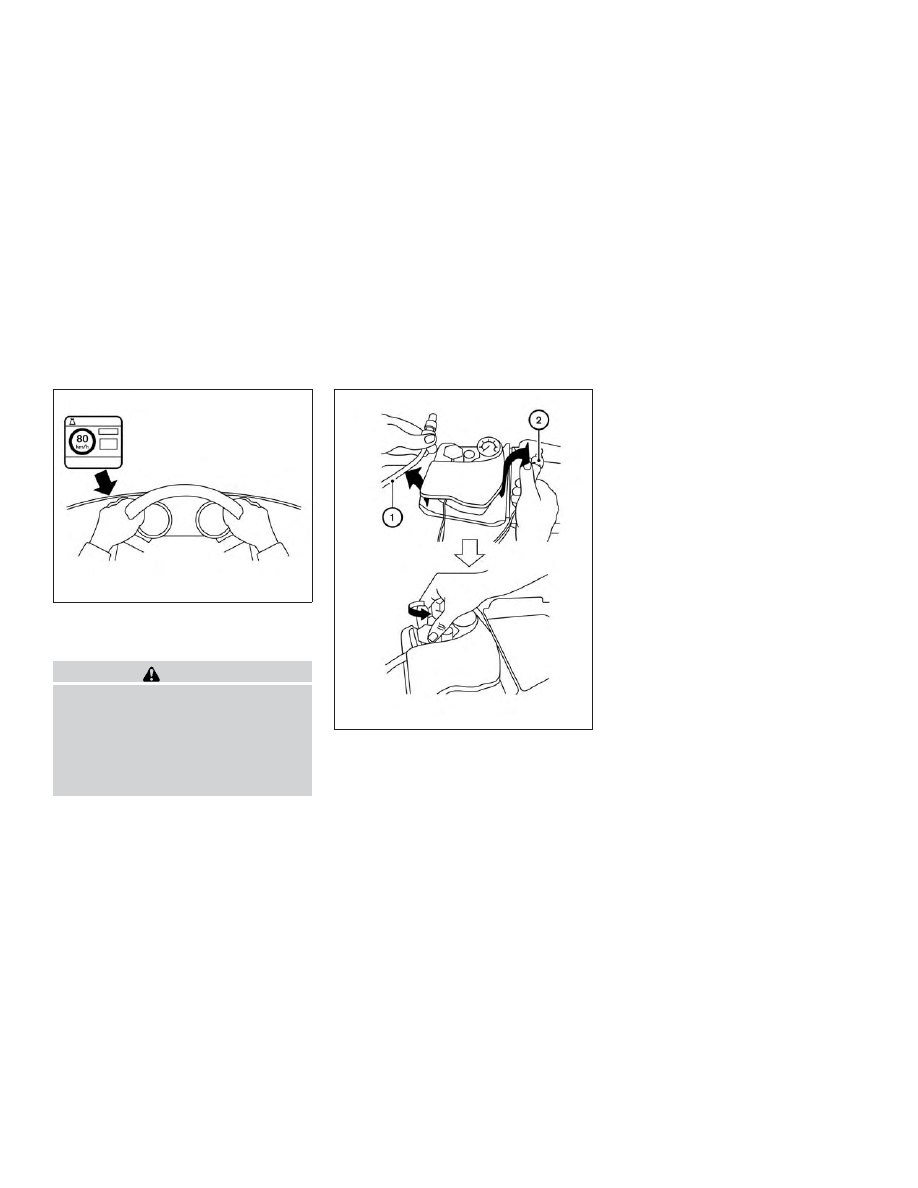Nissan NV200 Taxi (2017 year). Manual - part 15

2. Open the lid of the air compressor, take out
the speed restriction sticker, and put it in a
location where the driver can see it driving.
WARNING
● Do not apply the label to the center of
the steering wheel pad, as this can pre-
vent the air bag from properly function-
ing and cause serious injury.
● Avoid applying the label where it can
obstruct the view of the speedometer
and warning indicators.
3. Take the hose
䊊
1
and the power plug
䊊
2
out
of the air compressor. Remove the cap of the
bottle holder from the air compressor.
4. Remove the cap from the tire sealant bottle
and screw the bottle clockwise into the
bottle holder. Leave the bottle seal intact.
Screwing the bottle into the bottle holder will
pierce the seal of the bottle.
LCE2056
LCE2057
In case of emergency
6-5